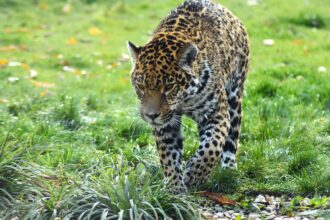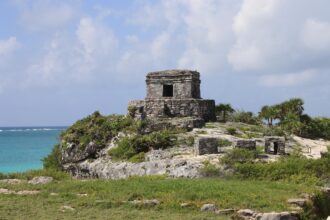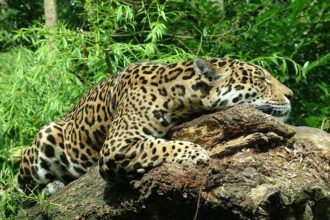The Influence of Coastal Areas on Jaguar Habitats
Overview of Coastal Regions and Jaguars
Coastal areas, marked by their unique ecological characteristics and rich biodiversity, serve as crucial habitats for numerous species, including the elusive jaguar (Panthera onca). These regions are not merely extensions of terrestrial ecosystems; they create distinct environmental conditions that significantly influence jaguar behavior, diet, and overall habitat suitability.
Climate and Ecosystem Dynamics
Coastal areas typically experience milder climates compared to interior regions. For jaguars, which thrive in tropical and subtropical environments, the warmth and humidity of coastal ecosystems provide favorable conditions for their survival. Coastal habitats often feature lush mangroves, salt marshes, and estuaries that contribute to higher biodiversity. These ecosystems support a wider variety of prey species such as capybaras, deer, and various fish, making them ideal hunting grounds for jaguars.
Mangrove Forests as Vital Habitats
Mangroves play a pivotal role in jaguar habitats along coastlines. These complex ecosystems offer dense cover and a diverse food source. Jaguars have adapted remarkably well to these environments, exhibiting unique hunting techniques to stalk prey in the intricate root systems of mangroves. The presence of water also influences jaguar behavior, encouraging them to swim and pursue aquatic prey such as fish and crustaceans. Research shows that jaguars in coastal areas demonstrate greater adaptability in diet compared to their inland counterparts, showcasing their resilience in varying habitats.
Influence of Tidal Changes
The dynamics of tides in coastal areas affect the availability of resources. High tides can inundate mangrove forests, causing prey species to seek shelter higher in the vegetative layers, which pressures jaguars to adjust their hunting patterns. For instance, during high tides, jaguars may rely more on terrestrial prey, while low tides may allow them better access to fish and other aquatic animals. This variation not only impacts jaguar diet but also influences their movement patterns and territory size.
Human Impact on Coastal Jaguar Habitats
The encroachment of human activities poses significant threats to jaguar habitats along coastlines. Coastal development, including tourism, agriculture, and urbanization, leads to habitat fragmentation, effectively reducing the available territories for these apex predators. As coastlines become more developed, the connectivity between mangrove forests and inland forests may disrupt jaguar movement and genetic exchange. This isolation can result in inbreeding, limiting the genetic diversity necessary for population resilience.
Conservation Efforts and Strategies
To combat the negative effects of human encroachment, several conservation strategies are being implemented in coastal jaguar habitats. Protected marine and terrestrial areas are being established to conserve the unique ecosystems that support jaguars. Additionally, community-based conservation programs are being initiated to involve local populations in preserving these vital habitats while promoting sustainable practices.
Education plays a crucial role in these conservation efforts. By raising awareness about the importance of mangroves and other coastal ecosystems in sustaining jaguar populations, local communities can better appreciate their role in conservation. Engaging stakeholders in eco-tourism initiatives allows residents to benefit economically while also preserving the natural habitat that jaguars rely on.
Role of Ecological Corridors
Establishing ecological corridors is vital for the ongoing survival of jaguars in coastal areas. These corridors facilitate the movement of jaguars between fragmented habitats, allowing for gene flow and reducing the risk of inbreeding. Conservationists are focusing on creating linkages between mangrove forests and inland ecosystems, ensuring that jaguars can navigate between various habitats. These corridors also support the movement of other wildlife, enhancing overall biodiversity.
Impact of Climate Change
Climate change poses both direct and indirect threats to jaguar habitats in coastal regions. Rising sea levels threaten to inundate coastal ecosystems, including vital mangrove habitats. The loss of these ecosystems would not only impact jaguar populations but also the entire community of organisms that depend on these environments. Additionally, shifting weather patterns can influence prey availability, further complicating the hunting strategies of jaguars.
Implementing climate resilience strategies is essential to mitigating these risks. Efforts to restore degraded mangrove habitats and enhance their resilience to climatic changes can help protect these ecosystems and the jaguars that inhabit them.
Innovative Research Approaches
Cutting-edge research techniques, such as GPS collaring and remote camera trapping, have enhanced our understanding of jaguar behavior in coastal habitats. By tracking the movements of individual jaguars, researchers can gather data on their territorial ranges, hunting behaviors, and interactions with environmental factors such as tides and human presence. This information is invaluable for informing conservation strategies and ensuring that habitat management practices are ecologically sound.
The Interconnectedness of Coastal Ecosystems
The health of jaguar populations in coastal regions is intrinsically connected to the overall health of these ecosystems. Coastal areas serve as breeding grounds for many aquatic organisms, contributing to a balanced food web that ultimately supports terrestrial predators like the jaguar. Protecting coastal areas from pollution, unsustainable fishing practices, and habitat destruction is critical not only for jaguars but for biodiversity as a whole.
Community Involvement in Conservation
Engaging local communities in the conservation of jaguar habitats is increasingly recognized as a fundamental approach to successful management strategies. Local knowledge and a respectful understanding of the ecosystem can lead to more effective conservation outcomes. Programs that integrate traditional ecological knowledge with scientific research can enhance the protection of natural habitats.
— Conservationists are advocating for participatory approaches that empower communities to take an active role in habitat preservation. This can lead to improved compliance with conservation regulations, as individuals see firsthand the benefits of sustaining local biodiversity and its impact on their livelihoods.
Future Directions in Jaguar Habitat Conservation
Looking forward, interdisciplinary approaches merging ecology, economics, and social science will be crucial for addressing the complex challenges faced by jaguars in coastal areas. Strategies must consider not only environmental sustainability but also socio-economic factors that affect local populations. Collaborative conservation efforts that bridge these disciplines can create a robust framework for ensuring the survival of jaguars in diverse coastal habitats.
By understanding the multifaceted interactions between jaguars and coastal ecosystems, stakeholders can work together to forge sustainable paths forward, balancing human development with the preservation of essential habitats for one of the planet’s most iconic species. Through commitment to conservation and sustainable practices, coastal areas can continue to be vital sanctuaries for jaguars in the years to come.







